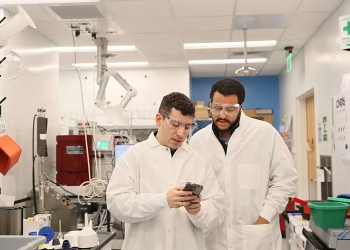…Nigeria has the highest BC mortality rate in Africa
As part of efforts to reduce the incidence of breast cancer all over the world, the University of Bristol has developed a new robot named the “manipulator,” designed by a team at the Bristol Robotics Laboratory to detect breast cancer early.
This innovative device was created using a 3D printer which underwent testing using simulated experiments involving a silicone breast.
As one of the primary applications of this robot is early breast cancer diagnosis, it demonstrates promising accuracy in detecting lumps.
Nairametrics learns that its potential benefits include making clinical breast examinations more accessible, potentially allowing them to be conducted locally in pharmacies and similar settings.
What they said, The lead author of the project, George Jenkinson said; “We hope that in the future this could be a real help in diagnosing cancers early.
“There have been a few attempts in the past to use technology to improve these examinations, but having a robot or electronic device that can physically feel breast tissue could be revolutionary”
“We hope that the research can help identify large-scale trends that could help diagnose breast cancer early,” said Mr Jenkinson.
“The ultimate goal is that the device and sensors will have the capability to detect lumps more accurately and deeper than is possible only from applying human touch.”
Prevalence of BC in Nigeria
Reports indicate that Breast cancer (BC) mortality rates in Nigeria are among the highest globally, with the country having the highest BC mortality rate in Africa.
The BC burden in Nigeria is on the rise, with the International Agency for Research on Cancer (IARC) reporting 28,380 new BC cases in the country in 2020.
This accounted for 22.7% of all new cancer cases and represented the largest share among different cancer types in Nigeria.
There is a lack of comprehensive data on BC treatment and outcomes in Nigeria, making it important to identify research gaps, challenges, and potential areas for future interventions.
As late diagnosis has been extensively studied as a contributing factor to the high morbidity and mortality associated with BC, this innovation could prove extremely crucial to assist with early detection.
































